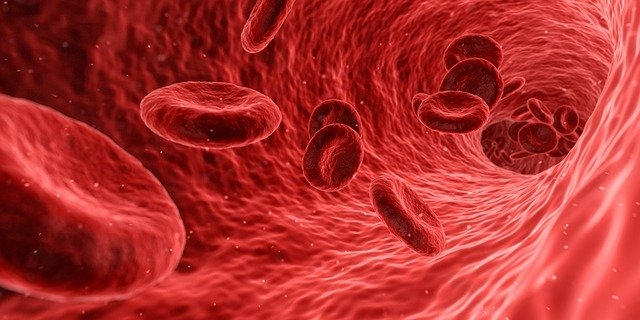
April 2022 Featured Products: VEGF Family
Apr 01, 2022Vascular endothelial growth factor (VEGF) is part of a family of growth factors and is a signalling protein involved in the formation of blood vessels. VEGF helps to signal formation of de novo blood vessels in embryonic development, as well as development of new blood vessels in an existing vessel system, such as after injury or to circumvent blocked vessels. VEGF was originally called vascular permeability factor (VPF) as it helps to increase vascular permeability and is a vasodilator. VEGF also plays an important role in many tumors, contributing to tumor angiogenesis.
In humans (and other mammals), the VEGF growth factor family includes five proteins: VEGFA, placenta growth factor (PLGF), VEGFB, VEGFC and VEGFD. The VEGFA protein was discovered first, and consequently, VEGFA is often referred to as just VEGF. The five members of the VEGF family are all involved in a variety of functions. VEGFA helps induces proliferation and migration of vascular endothelial cells and is important for Angiogenesis (formation of new blood vessels from pre-existing vessels). VEGFB is involved in the embryonic formation of new blood vessels. VEGFC is involved in the formation of new lymphatic vessels from pre-existing lymphatic vessels (lymphangiogensis). VEGFD is involved in angiogenesis, lymphangiogenesis, and endothelial cell growth. Lastly, PGF is important for the embryonic formation of new blood vessels as well as angiogenesis during disease or inflammation.
VEGFA also has different isoforms that arise from alternative RNA splicing from exon 8 of the VEGFA gene. There are two groups of VEGFA isoforms: proximally sliced or distally spliced (according to their exon splice site). Domain differences in VEGF splice variants affect their functionality. Proximally spliced variants are involved in pro-angiogenic activities, or the formation of new blood vessels, whereas distally spliced variants are involved in anti-angiogenic activities and expressed in normal tissue.
The mechanism of action of all VEGF proteins involves stimulating cellular responses by binding to VEGF receptors. VEGF receptors have an extracellular component that the VEGF proteins bind to, as well as a transmembrane region and intracellular region. The VEGF proteins can bind to one or more receptors, with the VEGF receptor 2 appearing to be the most important and facilitating most cellular responses to VEGF proteins. VEGF can also bind to complexes of neuropilins, a protein receptor in neurons, and VEGF receptors. This increases VEGF signalling in endothelial cells of blood vessels.
Reddot Biotech offers a variety of ELISA kits for Human VEGF and related targets. We carry all 5 VEGF family members, as well as the receptors.
Human Vascular Endothelial Growth Factor A (VEGFA) ELISA Kit
Human Vascular Endothelial Growth Factor B (VEGFB) ELISA Kit
Human Vascular Endothelial Growth Factor C (VEGFC) ELISA Kit
Human Vascular Endothelial Growth Factor D (VEGFD) ELISA Kit
Human Placenta Growth Factor (PLGF) ELISA Kit
Human Vascular Endothelial Growth Factor Receptor 1 (VEGFR1) ELISA Kit
Human Vascular Endothelial Growth Factor Receptor 2 (VEGFR2) ELISA Kit
Human Vascular Endothelial Growth Factor Receptor 3 (VEGFR3) ELISA Kit
View all our VEGF associated kits, or VEGF kits for human, canine, bovine, equine, mouse, rat, chicken, porcine, and rabbit.